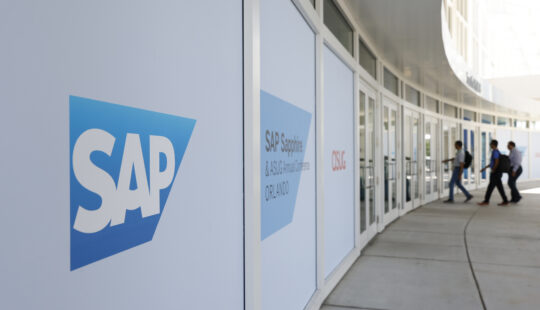SAP was the first company in South Africa to close its offices in early March 2020, when one of our employees had a close contact with “Patient number 4”. In those early days, the government was still numbering patients and we had barely reached double digits of known infections in the country. With around four million South Africans now reported to have had Covid over the last two years, it is surreal to look back on those days.
I remember clearly the anxiety of employees as we announced our office closure. Many felt daunted by the idea of working from home for a couple of weeks, even though we are a technology company and have long since had the tools and ability to work remotely. It was a mindset challenge. We were used to being in the office – the familiarity of our daily routines, the interaction with our customers and colleagues.
As it turns out, those few weeks turned into months and eventually a couple of years. While our offices opened over time to support those with significant productivity challenges, the uptake was low, and employees only started trickling back again this year. We are expected back at the office part time from July in a hybrid work model that SAP calls “Pledge to Flex”.
What is most surprising once again is the anxiety levels of employees at the thought of returning to the office. The things that scared them about leaving the office are now commonplace, and they are resistant to return to the things that used to be so familiar. I hear similar anecdotes from friends and colleagues in several industries. There are some key considerations to navigating what we now consider to be “the new normal”.
Accept the new normal is not the old normal
Employers or managers who think we can simply cut and paste the world from 2019 and make it fit for purpose for the future are sadly mistaken. The pandemic had a major impact on all aspects of life, especially the notion of “workplace”. Many who struggled with the idea of working remotely, soon started to appreciate the positives – less time in traffic, reduced transport costs, less demanding business travel schedules, ability to juggle both work and personal responsibilities in a more dynamic manner. From the corner of the dining room table, more efficient home offices with high-speed internet and office equipment sprang up. Zoom and MS Teams became an integral part of every day. Children and pets made guest appearances. Suits, ties and heels were replaced by open collar shirts, track pants and often slippers. And while we complained about all the things we missed about the office; we unconsciously became very comfortable not being there. Of course, there is always a downside and that came in the form of an inability to “switch off” from work. A blurring between personal space and workspace led to unhealthy behaviours like business calls after-hours, late-night emailing, working through leave periods and ultimately stress and significantly increased mental health issues. It’s clear that a more balanced approach is required. There is absolute merit to being in an office environment, but the notion of 8-5, five days a week, no longer makes sense.
Choose the right things to hold on to
It’s important to remember the things we truly missed in the early days of remote working – the ability to grab a cup of coffee with a colleague and catch up on both work and personal news, the on-the-job learning and mentoring that happened organically, the frenetic energy of face-to-face brainstorms with everyone huddled over an actual whiteboard, the exhilaration of an important customer presentation in their boardroom. The reality is that email, spreadsheeting and conference calls can be done from anywhere, and may be done more efficiently in the quiet of your home office. But team building activities, strategy discussions, networking meetings and celebrations are simply not as interactive or fun online. We are social beings and tasks that require a high level of collaboration are easier and more gratifying in person. The new normal requires us to distinguish between tasks and choose the right environment for each. Forcing employees to sit in the office five days a week to complete menial tasks makes no sense. Create moments of meaning in the office and hold on to the things we first missed. Those are the very reason to go back, even if part time, in the new normal.
Remember that the customer is still king
Neither employers nor employees had a choice around remote working during the lockdowns. It was simply a necessity that we had to adapt to. However, employees who enjoyed significant flexibility for an extended period may now struggle the most with returning to the office, even part time. The truth is, working from home suits them, for all the reasons discussed earlier. But this is still a job and most of us don’t do it in isolation. There are at least three parties in the equation – employees, employers and customers. While you may be as happy as Larry in your slippers at home, there may be employees who need your support and mentorship in the office, managers who need to reestablish team bonds, and customers that need direct engagement. At the end of the day, our job is to support our customers’ needs and that requires a compromise. The new normal is about finding the right balance between what works for you, the business and the customer.
Embrace a return to humanity
The pandemic surfaced many human truths, most predominantly the fragility of life and our planet. It highlighted the inequality in our societies, whether those living in poverty or afflicted by discrimination such as gender-based violence. It amplified the need for different types of education systems, healthcare systems, welfare systems. It showed up the cracks in our traditional commercial and economic structures and the need for more economically inclusive societies. It heightened the sense of urgency for us to reduce the damage to the earth and to embrace a more sustainable and equitable way of living. To be successful in the new normal requires us to be more purposeful and embrace our connected humanity.
We are living in both turbulent and exciting times. The new normal creates an opportunity for us to hit the “reset” button and carry forward only what is useful and healthy for the future.
This article first appeared here: Advice on navigating the new normal – Aspioneer .




